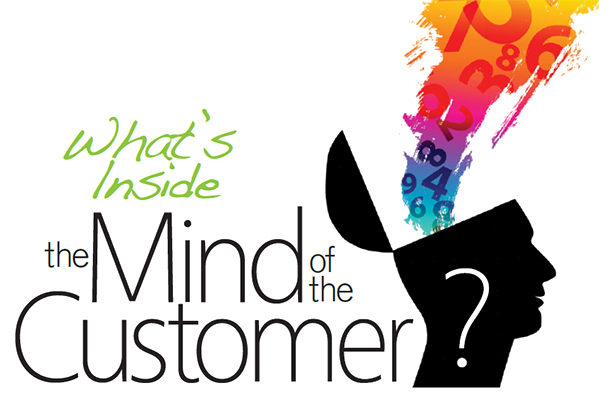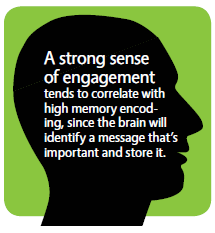
Savvy organizations are turning to neuroscience to tap into the emotional factors of consumer decision making. By Cynthia Clark

Savvy organizations are turning to neuroscience to tap into the emotional factors of consumer decision making. By Cynthia Clark

Savvy organizations are turning to neuroscience to tap into the emotional factors of consumer decision making. By Cynthia Clark


What do your customers really think of you? For most companies, it’s just guesswork. However, advances in technology are transforming this fantasy into reality, giving brands the opportunity to learn more about how their products and messages impact customers and prospects.
Understanding what goes on in customers’ minds allows brands to stop wasting time—and money—on ineffective marketing. Brands are beginning to optimize their use of customer neuroscience in an attempt to become more psychic and leverage even the subconscious signals sent by customers.
Emotions’ role in the decision-making process
Richard Silberstein, chairman of the Australia-based market research company Neuro-Insight, explains that human decisions aren’t solely dependent on rational thinking. “We might think that our decisions are purely rational, but in fact there’s an emotional drive in almost every decision we make,” he says. Yet, these emotional processes often take place within the subconscious, leaving the customer completely unaware that a past experience, a comment by a friend, or an advertisement is playing a role in his decision to purchase a particular product rather than a different brand. The emotional aspect of decision making is becoming more significant as differences between brands shrink.
If humans based all of their purchasing decisions solely on rational reasoning, they would find it difficult to choose among similar items. Let’s say they’re deciding between different brands of cereal. The rational part of the brain will weigh price, size, nutrition content, and other logical elements, while the emotional side will remember the brand used growing up, or remember their reaction to a commercial, for example.
According to Heather Andrew, director of client development at Neuro-Insight UK, organizations are trying to determine what’s really central to their brand, which many times is a combination of elements like the logo, color, shape, or sound that trigger a response in the brain. For example, the sound of a pack of Pringles being popped open has become embedded in many people’s minds as an iconic trigger for the brand.
While the emotional impact of decision making often happens without the customer himself knowing, it has an important role in differentiating between almost identical options. In fact, without the emotional element, choice is likely to confound customers, making it difficult to make a decision.
The right-brain, left-brain divide
The role of emotions in the decision-making process makes it difficult to pinpoint exactly why customers choose certain things over others. The brain operates so fast that in many cases we’re not aware of what our feelings are from one second to the next. This is exacerbated by restrictions in humans’ ability to verbalize their changing feelings. This phenomenon occurs because in the majority of individuals the right cerebral hemisphere is responsible for emotions, while language tends to be regulated by the left hemisphere. As Silberstein explains, there are no direct connections between the emotional responsive regions of the right hemisphere and the language functions in the left part of the brain. Therefore, when humans verbalize their emotions, these are filtered through the left brain, which tends to put a rational spin on them, Andrew says.
Because human beings don’t always correctly verbalize the role of emotions in their decision-making process, traditional methods of market research that depend on surveys and questionnaires are unsuitable to understand the non-verbal and non-rational processes that impact a person’s decisions.
This realization has contributed to the popularity of neuroscience techniques that focus on measuring activity in different parts of the brain, identifying second by second changes. Steady-State Topography (SST), a technique first developed by Silberstein and his colleagues in 1990, uses sensors to record and measure electrical signals in different parts of the brain while customers are watching an advertisement. Rather than depend on customers’ awareness of their emotions, the technology goes directly to the source to understand how the brain is working.
The power of memory
A lot has to do with the pieces of information that are stored in our long-term memory and which ones can be triggered by certain sensory hooks. As Andrew puts it, what doesn’t go into memory will never impact our decisions. She explains that a lot of interest lies in determining when memory activity is at its peak, an indication that a snapshot of information, for example from a television advertisement, is being encoded in the brain. “A lot of work with our clients revolves around understanding what these moments are and what it is about them that triggers a brand response,” she says.
Identifying which iconic triggers, like the sound of a Kit Kat bar being broken off, will activate a memory is a major area of interest for brands, especially because they want to make the most of their advertising dollars. Being able to use the most memorable cues within advertisements, for example a particular sound or a color, will help their commercials have a deeper impact on customers.
“Your perception of the brand and how you respond to the brand is determined by the totality of the experience and the long-term memories that are built and associated with the brand,” Silberstein says.
Decades of research have shown that distinct brain regions are responsible for encoding experiences in long-term memory, which can span from 30 minutes to a lifetime. Using SST, Silberstein and his team measure how fast different parts of the brain work on a second-by-second basis, allowing the neuroscientists to work out what’s being retained into long-term memory, and will therefore have an impact in future purchasing decisions. For example, research commissioned by the Ad Council of America looked at how 120 people viewed an AIDS awareness commercial. Neuro-Insights found that a scene with a child standing on a deserted road elicited the most powerful high memory encoding.
Although some memories are extremely vivid and can remain so for a long time, the human brain doesn’t store a piece of communication in its entirety. Silberstein explains that the brain will instead encode the most powerful snapshot. When that snapshot is triggered, the brain will then reconstruct the whole memory, including any associated feelings.
However, most individuals aren’t even aware of this complex cerebral process. In fact, the majority of this process happens in the unconscious, meaning that even if an individual is paying attention to his changing emotions, he is unlikely to be able to explain what’s being encoded in his memory and how these images will influence future brand perceptions.
Further, memory triggers can bring forth negative feelings that will be associated with the brand and therefore be counterproductive. Andrew uses the example of a British food manufacturer that wanted to test a new line of advertising for a traditional food product. The new advertisement used humor to stretch the boundaries and when compared with a more traditional commercial, the new advertisement had a stronger impact on viewers who remembered it more. But the researchers also noted that this ad had a negative impact on salience because it was incongruent with the brand and it was therefore undermining the associations that customers already had with that particular product. While less impactful, the traditional ad was more consistent with the brand and has been a successful tool in the organization’s marketing arsenal.
Therefore, it’s not only what we remember that’s important. Organizations need to consider the emotional impact those memories have on customers and whether they are consistent with the message the brand conveys. This is true for advertisements as well as for customer service and other interactions.
Measuring customer loyalty
While neuroscience has been most actively used to help organizations determine which messages will resonate best with their customers and prospects, brands are interested in gleaning more insights. Organizations want to push the envelope and use neuroscience to get a competitive edge. For example, apart from vetting commercials, companies can leverage lessons from neuroscience to design products that their customers, and their competitors’ customers, will clamor for. And the most forward-thinking companies, including some car manufacturers, are using neuroscience to determine what customers think about a prototype, allowing them to make changes before mass manufacturing.
Perhaps unsurprisingly, one area that brands are interested in revolves around understanding and measuring customer loyalty. An important indicator of loyalty is engagement. Andrew notes that the engagement part of the brain is triggered when a person encounters something of relevance, for example seeing a family member. When it comes to brand communications, the engagement part of the brain is active when a customer feels affinity to a particular company or product, which also reflects loyalty.
More significantly, a strong sense of engagement tends to correlate with high memory encoding, since the brain will identify a message that’s important and store it. Measuring engagement is another area in which neuroscience excels, since it takes a direct snapshot of brain activity and doesn’t allow a response to be rationalized.
But crucial to these advances is neuroscience companies working together to create a common understanding of what the key measures are and how they work. As Andrew points out, it’s important to have a standard set of terms and measurements. Right now different groups of scientists measure brain activity differently. “We need a common currency in terms of what goes on in the brain,” she says.
Despite the advances in customer neuroscience, we’re still far from being able to read someone’s mind. “We cannot measure what you’re thinking, but how you’re thinking about that feeling,” Silberstein says. So while brands want to know exactly what a customer thinks about their products, for now they have to contend with only the understanding of how customers’ brains are functioning when exposed to messages.
The future of neuroscience
Customers should not fear that organizations will be able to read their every thought, even if they’re taking part in a study. Yet, interest in customer neuroscience continues to increase as organizations recognize that knowing what their customers want and how they feel about their company—even if they cannot verbalize these emotions—will help them improve their bottom line. Becoming a psychic brand will soon be a business reality.
The brain has always been a fascinating organ, and a lot of research has gone into trying to understand the way it works. While no one has a crystal ball into the future, one thing is certain: neuroscience will remain a highly researched area and organizations will be clamoring to learn more about their customers. 